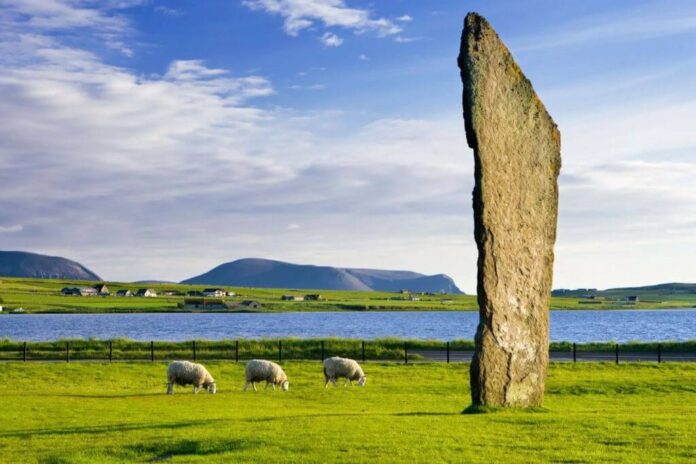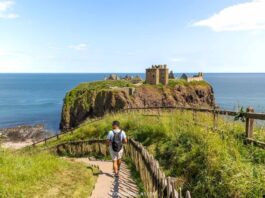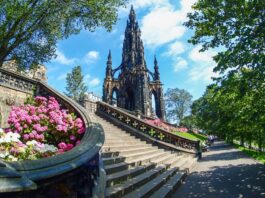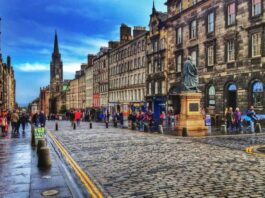While you may have heard of the Scottish Highlands and the Isle of Skye, there are numerous reasons why you should visit the Orkney Islands in Scotland. It’s not simply for the stunning scenery!
The Orkney Islands consist of seven main islands and approximately 100 smaller islands. Vikings established there approximately 800 AD, and they became part of the Kingdom of Scotland in 1266.
They have some of the world’s oldest history, lovely sandy beaches, an amazing cathedral, and excellent museums. Hiking, golfing, kayaking, and fishing are all options.
If you enjoy fresh fish, the Orkney Islands are a must-see vacation.
Pay a visit to Kirkwall and St Magnus Cathedral.
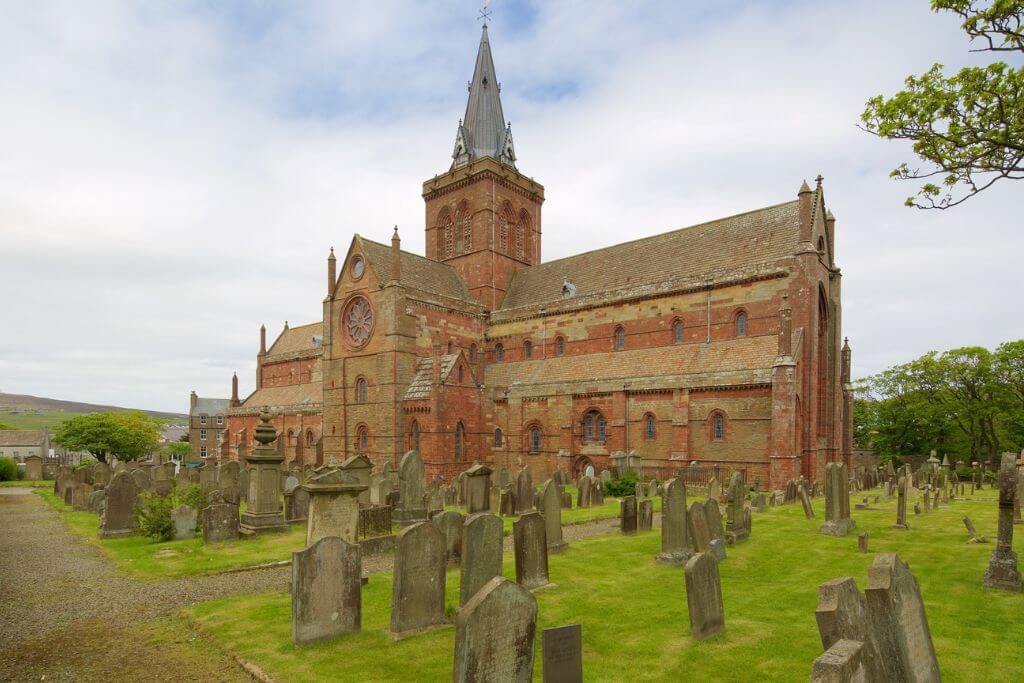
Kirkwall is the capital of Orkney’s main island. With quaint shops and a colorful harbor, the city is modest and simple to walk around in less than 30 minutes. You can’t get lost, believe me.
The majestic St Magnus Cathedral, which dates back to the 12th century, should not be missed. St Magnus Cathedral is the only cathedral in Scotland that still houses the relics of its patron saint, and admission is free.
If you need to warm up, try some of the greatest whiskey at Highland Park Distillery, and on a sunny day, enjoy some Orkney ice cream.
Eat some of the freshest fish you’ve ever had!
I enjoy seafood and have eaten a lot of it in my life, but the scallops I had when touring the Orkney Islands were by far the greatest I’ve ever tasted.
You’ll find plenty of options on the menu, including lobster, crab, and several sorts of fish.
In fact, the food in Scotland is worth getting thrilled about! Don’t miss out on the top 12 meals to taste in Scotland.
Skara Brae is a UNESCO World Heritage Site.
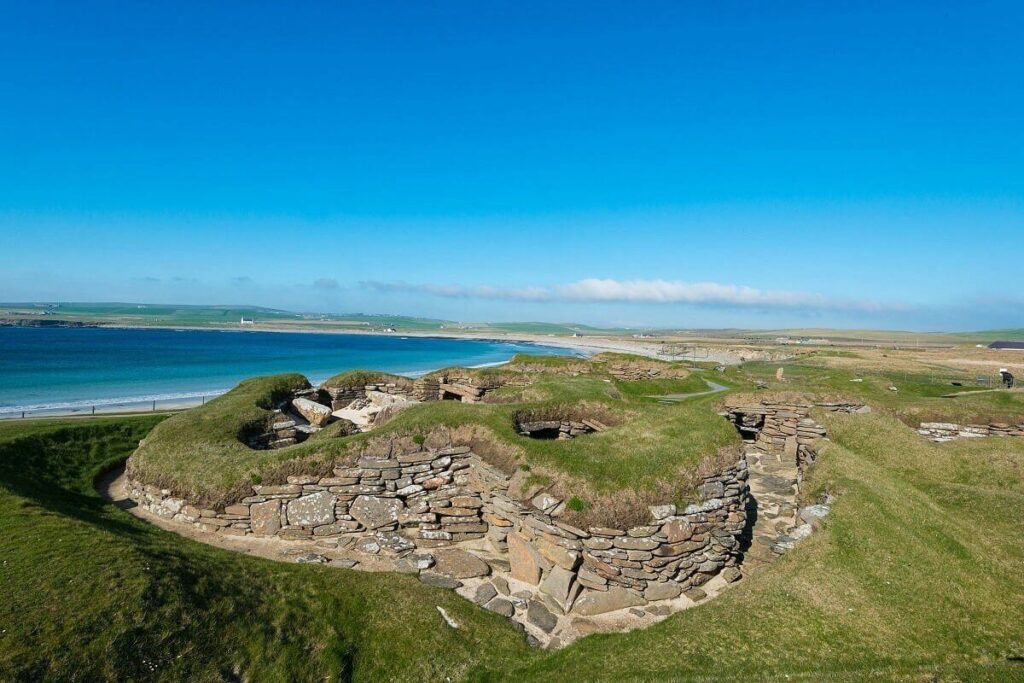
There are a few neolithic sites on the Orkney Islands, and Skara Brae is a good place to start exploring them.
It may seem incredible, yet this location existed long before the Great Wall of China or the Egyptian pyramids. It predates Stonehenge by several centuries. Skara Brae was a bustling community.
Take a step back 5,000 years back in time to see Western Europe’s best-preserved Neolithic settlement, which clearly reveals how people used to live in nine subterranean stone dwellings connected by tunnels and illuminated only by whale-oil lamps.
Skara Brae has regular hours of operation, and I recommend purchasing your tickets online here. Skaill House, a medieval manor house near Skara Brae and the largest of the Orkney Islands, is also worth a visit.
Explore the Orkney Islands and compare the Ring of Brodgar to the Standing Stones of Stenness.
The following two neolithic sites are best understood in tandem.
The Stones of Stenness are now four standing stones up to 6m tall in a circle that once housed 12 stones. These incredible megaliths are located at the beginning of the Brodgar peninsula.
Their purpose is unknown, but we believe they were involved in activities and ceremonies that celebrated the link between living beings. Possibly to commemorate the Summer Solstice.
The Ring of Brodgar is the next intriguing sight to see.
According to one hypothesis, the Ring of Brodgar constituted a symbolic region for the dead, whilst the Standing Stones of Stenness signified life. As a result, the march from Stenness to Brodgar could be interpreted as a metaphorical journey from life to death.
The Ring of Brodgar is a large stone circle made up of 60 stones, 36 of which still stand today and may be approached rather closely.
Inside Maeshowe, you may see Viking carvings.
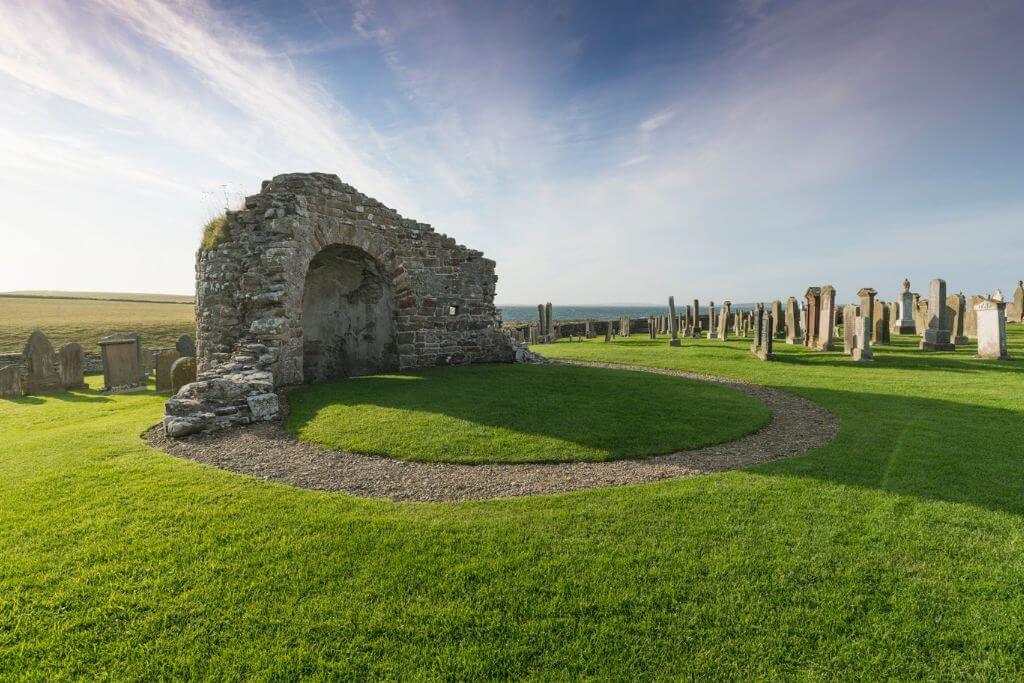
Maeshowe is the best chambered tomb north of the Alps and a must-see on any Orkney Islands vacation. It was constructed circa 3500BC, and the entrance fee includes a guided tour.
From the outside, it appears to be a massive grassy mound, however when entering, you will discover a chamber made by a very competent individual.
The sun shines through the entry tunnel on the winter solstice, lighting the main cell’s entrance. How archaic people built this still baffles modern engineers.
Of course, the engravings on the walls from Vikings who broke into the tomb, most likely in search of treasure, are the main attraction for many visitors. They inscribed numerous messages into the stones inside.
The Museum of Orkney
Sir Robert Gordon established the Orkney Museum in 1814 in order to preserve the islands’ heritage. Today, the museum houses about 30,000 pieces, which are displayed in three main galleries. It is an excellent spot to visit on a wet day.
The Orkney Islands feel distinct from the rest of Scotland, and there appears to be a strong connection to Viking periods here.
The museum chronicles the narrative of Orkney from the Stone Age to the Picts and Vikings and all the way up to the present day.
Barriers to the Italian Chapel and Churchill
Drive down to the Italian Chapel for something new and learn more interesting information about WWII on the Orkney Islands.
The Italian POWs were allowed to build a Catholic chapel to commemorate their homeland. The Neo-Baroque exterior against the greenery is stunning, but you can also enter and enjoy the colorful ornamentation inside the church for £3.50.
One of the Churchill Barriers may be seen facing the chapel.
The barriers were built during WWII as a defensive precaution to keep enemy ships and submarines out of Scapa Flow, which hosted the majority of Britain’s fleet at the time.
On the Orkney Islands, four causeways have been constructed.
That’s all there is to it! Our top seven reasons to visit Scotland’s stunning Orkney Islands.
